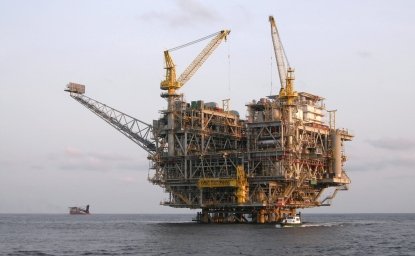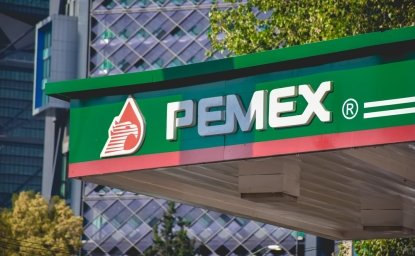The United States is once again knocking on the door of the tiny Arab emirate of the Gulf, Qatar, this time for help in solving the possible fallout from an international crisis not of its making and far from its shores. The Biden administration is asking it to provide emergency gas supplies to America’s European allies if Russia invades Ukraine and that they join the United States in imposing economic sanctions on it. The fear is that Moscow will then retaliate by cutting gas exports to Europe at a time when they are relying on Russia for 40 percent of their needs.
Qatar has suddenly been injected into the U.S.-Russian showdown over Ukraine only because it is the world’s leading producer of liquefied national gas (LNG), which is exported by ship. This speck of a desert nation sticking out into the Persian Gulf already hosts the headquarters of U.S. Central Command (CENTCOM). It hosted U.S.-Taliban talks and played a key role as a waystation in the Pentagon’s evacuation of over 100,000 Afghan refugees from Kabul last August. With the closing of the U.S. embassy in Kabul, Qatar now represents U.S. interests in Afghanistan.
The Biden administration is now asking Qatar to break long-term supply contracts with its customers who are mostly Asian countries, including China, and divert some of its gas to Europe.
The Biden administration is now asking Qatar to break long-term supply contracts with its customers who are mostly Asian countries, including China, and divert some of its gas to Europe. President Biden reportedly made his pitch to Qatar’s ruler, Sheikh Tamim al-Thani, at their White House meeting on Monday. He is the first Arab leader of the Gulf to be invited since Biden came into office a year ago.
However, there was no mention of Qatari gas at all in the White House’s account of their meeting afterwards. Instead, Biden diverted attention from the issue by announcing he was designating Qatar a “major non-NATO ally” and that Qatar Airways had struck a $20 billion deal with Boeing for its latest cargo and passenger planes. An official familiar with the Biden-Tamim talks said Qatar had made no commitment as to the amount it might be able to divert to Europe given its long-term contracts but told the President it stood ready to help “to the extent that it could.”
There is a considerable irony in the administration’s request. The United States itself is set to become the world’s biggest LNG exporter this year, surpassing both Qatar and Australia. Most U.S. gas exports go by pipeline to Canada and Mexico. But it has fast become a major LNG exporter as well, thanks to the extraction of massive amount of gas from shale deposits and special container vessels capable of carrying it in liquid form at very cold temperature—minus 259 Fahrenheit.
The U.S. Energy Information Administration (EIA) expects U.S. producers to export on average 11.5 billion cubic feet of LNG per day this year, accounting for 22 percent of international trade in this much coveted commodity currently in tight supply and commanding very high prices. EIA statistics show China ranked as the number one purchaser of LNG from the United States in October.
Still, the administration has been pressing American companies to voluntarily direct more of their LNG supplies to America’s European allies.
The U.S. government has no authority to order private LNG companies what to do or where to sell their exports. Right now, their main customers are Brazil, Japan, South Korea, India and Turkey. The only Western European countries buying LNG from the United States were Portugal, France and Spain. Still, the administration has been pressing American companies to voluntarily direct more of their LNG supplies to America’s European allies.
Media reports so far say American LNG exporters have told the White House they are doing what they can but do not want to break long-term contracts and have little excess capacity right now. Qatari officials have reportedly been saying precisely the same thing. Both want the Biden administration to do the heavy diplomatic lifting to get their respective customers to agree to the diversion of some of their contracted LNG shipments.
Why then has Biden invited Sheikh Tamim to the White House when it has not called in American gas producers? One reason may be that almost the entire LNG industry in Qatar is in the hand of state-owned QatarEnergy, whose subsidiary Qatargas is under the dictates of the government. Sheikh Tamim doesn’t have to deal with multiple private companies free to decide on their own where they will export their gas.
Qatar lives on its massive gas deposits, the third largest after Russia and Iran. Its North Field, the world’s largest, is shared partly with Iran. Its LNG exports were worth nearly $40 billion in 2019, enough to rank it as the world’s richest country on a per capita basis—at least for its own citizens-- of $91,500 that year. Only 300,000 of the emirate’s 2.6 million residents are citizens.
QatarEnergy is seizing the moment. In the world’s accelerating transition from fossil fuels to renewable energy sources, gas is viewed as a “transition fuel” because it emits far less polluting carbon dioxide. In early January, it awarded a contract to the Texas-based McDermott to nearly double its gas production from offshore gas fields to the north of the country, from 77 million tons a year to 126 million tons. It has already ordered six additional LNG vessels, four of them from South Korea’s Samsung Heavy Industries.
The only problem for the Biden administration is that none of this additional Qatari LNG will be available until 2025 while it needs the gas for its Western European allies now.
There is a precedent for Qatar diverting some of its LNG production to meet another country’s national emergency.
There is a precedent for Qatar diverting some of its LNG production to meet another country’s national emergency. After the earthquake and tsunami in March 2011 that knocked out three nuclear reactions at Fukushima, Japan called upon gas exporters around the world for help to restore its energy supply. Among the few who responded immediately was Qatar. Four days after the earthquake, Qatargas issued a statement saying it “stands ready to provide ‘all the support’ to Japan in its emergency and ‘meet any increased requirements for LNG at this time.’”
Unfortunately, there is one big difference between then and now. Then, Qatar had just opened two new LNG production plants and was looking for new customers. Today, Qatar only sends 5% of its gas to Europe. Further, it already has many long-standing customers, none of which it cares to alienate in a tight market, and no excess capacity until 2025.
The views expressed in these articles are those of the author and do not reflect an official position of the Wilson Center.
Author

Former Washington Post Middle East Correspondent

Middle East Program
The Wilson Center’s Middle East Program serves as a crucial resource for the policymaking community and beyond, providing analyses and research that helps inform US foreign policymaking, stimulates public debate, and expands knowledge about issues in the wider Middle East and North Africa (MENA) region. Read more

Explore More
Browse Insights & Analysis
La esencia de la infraestructura global: perspectivas del líder de la industria Matt Harris

Debunking the Patient Capital Myth: The Reality of China’s Resource-Backed Lending Practices


